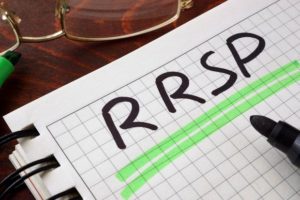
It is admittedly a complex strategy but the Globe & Mail’s Report on Business has just published my latest article for high-net-worth investors who don’t mind trading RRSP losses today for tax savings tomorrow. You can retrieve it by clicking on the highlighted headline here: An RRSP strategy to ‘liberate your losers” in order to save tax.
The article is a followup to an earlier Globe article I ran late in the summer, which was summarized in this Hub blog: The ‘Nice” problem of million-dollar RRSPs.
Liberating your Losers is a phrase used by a broker source of mine who prefers for now not to be identified. The strategy describes a possible bright side to crystalizing RRSP losses by “withdrawing them in kind” to non-registered status. That is, you keep the position but in effect move it outside the RRSP.
An alternative to early RRSP drawdowns
This is an alternative to the more typical RRSP drawdown tactic of first selling your stocks inside the RRSP, then withdrawing the cash. Either way you are “deregistering” some of your RRSP, which means paying withholding taxes. You’ll pay 10% for withdrawals under $5,000, 20% for those between $5,001 and $15,000 and 30% beyond that. This can be handled automatically by your RRSP trustee.
Liberating your losers can make sense under three circumstances, my source says: when you have had bad timing in your RRSP/RRIF investment choices; when you’re confident your investment will return to its previous higher value; and if you prefer to pay tax on 50% of a capital gain rather than 100% of income.
Making Lemonade from Lemons
Mind you, I also talked to three sources who were willing to be on the record, and some were skeptical that the strategy was worth implementing. After all, we’d all prefer that every security we place in our RRSP goes up in value. But of course in the real world this can’t always happen, so I’d categorize this tactic as being in the category of “If life hands you a lemon, make lemonade.” As I admit in the piece, I tried this strategy a year ago after first blogging about it, and “liberate” five losing RRSP trades involving both Canadian and US stocks.
As I also note, I use a discount broker but it was easier to call the financial institution and let them walk me through it. It’s less complicated than it seems and you can do it in a matter of minutes. It’s not that uncommon, the rep told me. And some of those positions that are now non-registered have indeed recovered in the past year.
How the tax withholding works
The G&M version of the article touches on the complexities of how the withholding taxes work on deregistering or transferring-in-kind securities to non-registered portfolio. The example of $5,000 was unfortunate in that that particular amount is on the threshold of the CRA’s escalating scale on withholding taxes.
Normally, on withdrawals of $5,000 or less, the required withholding tax is 10%, while this rises to 20% and 30% on higher amounts. Some investors seem to think they will come ahead on taxes if they withdraw only in “chunks” of $5,000 or less, on the grounds 10% is less than 20% or 30%.
However, this is a bit of an illusion. When you do your taxes early in 2018, you’ll know precisely how much tax needs to be paid. Odds are you’ll pay too little in advance by paying just 10%, so my preference is to pay the higher amount and get a “head start” on your taxes payable.
In semi-retirement, you want to bring in as much money as you can each year in the lowest tax brackets, a process called “Topping up to Bracket,” which I looked at a year ago in this MoneySense Retired Money column.
Because of its complexity, Liberating your Losers and topping up to bracket is something you need to bounce off your financial advisor to determine whether or not the strategy might work for you.

